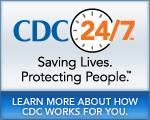MMWR News Synopsis
Friday, January 25, 2019
- Characteristics of School-Associated Homicides — United States, 1994–2018
- Characteristics of Deceased Solid Organ Donors and Screening Results for Hepatitis B, C, and Human Immunodeficiency Viruses — United States, 2010–2017
- Transgender Identity and Experiences of Violence Victimization, Substance Use, Suicide Risk, and Sexual Risk Behaviors Among High School Students — 19 States and Large Urban School Districts, 2017
- Transgender Identity and Experiences of Violence Victimization, Substance Use, Suicide Risk, and Sexual Risk Behaviors Among High School Students — 19 States and Large Urban School Districts, 2017
- Notes from the Field
- QuickStats
Characteristics of School-Associated Homicides — United States, 1994–2018
CDC Media Relations
404-639-3286
Lessons learned from studying school-associated homicides (SAHs) and youth violence more broadly suggest that comprehensive approaches to youth violence prevention may be useful in preventing violent incidents on and off school property. Comprehensive prevention may include strategies that promote connections between youth and caring adults, enhance young people’s problem solving skills, and reduce future risk among youth who have a history of violence. Although school-associated homicides account for less than 2 percent of all youth homicides, even one such incident is unacceptable. School-Associated Youth Homicides (SAYHs) are devastating for families, schools, and entire communities. Single-victim SAH rates were stable from 1994 through 2016, whereas multiple-victim incident rates increased significantly from July 2009 through June 2018 – a finding likely related to a large number of incidents from 2016-2018. SAHs that involve one victim are similar to youth homicides in the broader community in that they often involve racial/ethnic minority males, involve people ages 15-18 years, and occur in urban areas. Although over 90 percent of SAH incidents from July 1994 through June 2016 involved one victim, 1 in 5 victims died in multiple-victim incidents.
Characteristics of Deceased Solid Organ Donors and Screening Results for Hepatitis B, C, and Human Immunodeficiency Viruses — United States, 2010–2017
CDC Media Relations
404-639-3286
The epidemic of opioid overdose deaths has increased the number and percentage of organ donors in the U.S. who are at increased risk for hepatitis B, hepatitis C, and HIV infections. Nucleic acid testing is being used before transplantation to prevent inadvertent transmission of these viruses. Post-transplant recipient monitoring for infection is recommended as an added precaution to ensure the safety of recipients. The tragic increase in opioid overdose deaths in the United States has likely contributed to the increase in the number of organs available for donation, but how has this affected the risk of hepatitis and HIV infection among organ donors? This study found that from 2010-2017, the proportion of organs from increased-risk donors (IRD) (including those who died of drug intoxication or who injected drugs) increased from about 9 percent to about 26 percent. While the study found that IRD were more likely to test positive for hepatitis B and C, it also found that by 2017 nearly all donors were screened using nucleic acid tests, the most advanced screening test available. Nucleic acid testing enables the early identification of these infections and can minimize the risk of infection to recipients of IRD organs. Post-transplant recipient monitoring with nucleic acid testing is recommended as an added precaution to ensure the safety of recipients of IRD organs.
Transgender Identity and Experiences of Violence Victimization, Substance Use, Suicide Risk, and Sexual Risk Behaviors Among High School Students — 19 States and Large Urban School Districts, 2017
CDC Media Relations
404-639-3286
The study’s findings show that transgender students were more at risk for negative behaviors and experiences related to sex, violence, substance use, and suicide risk than their cisgender peers. This demonstrates the need for school-based interventions for transgender students. Using a pilot measure of transgender identity from 19 sites in the 2017 Youth Risk Behavior Survey, this study assesses the prevalence of transgender identity (those whose gender identity does not align with their sex) among high school students and examines the relationship between transgender identity and violence victimization, substance use, suicide risk, and sexual risk behaviors. The study found that approximately 1.8 percent of high school students surveyed identify as transgender. Additionally, transgender students were more likely than were cisgender students (whose gender identity aligns with their sex) to report violence victimization, substance use, and suicide risk, and, although generally more likely to report sexual risk behaviors, were also more likely to report having been tested for HIV. Findings underscore that transgender students face serious health risks and could benefit from interventions such as safe and supportive school environments and culturally competent health services.
Scurvy Outbreak Among South Sudanese Adolescents and Young Men — Kakuma Refugee Camp, Kenya, 2017–2018
CDC Media Relations
404-639-3286
Scurvy outbreaks, caused by diets lacking vitamin C-rich fruits and vegetables, remain a risk in refugee settings. Scurvy is a vitamin C deficiency that can lead to spontaneous bleeding, pain of the limbs, body swelling, gum ulcerations, tooth loss, poor wound healing, anemia, and death from infection or bleeding. Modern cases of scurvy are rare, but scurvy can still affect people who do not consume enough vitamin C. In refugee settings, food assistance is often based on average household consumption, factoring in age, sex and caloric needs. A CDC investigation of a scurvy outbreak in Kakuma refugee camp in northwestern Kenya found that the young Sudanese men affected lived and cooked together and had very high nutritional needs, compared with an average household, and that scurvy remains a risk in refugee settings. Simply providing an average amount of calories calculated on assumed household demographics is inadequate for meeting some refugees’ nutritional requirements.
###
U.S. DEPARTMENT OF HEALTH AND HUMAN SERVICES
CDC works 24/7 protecting America’s health, safety and security. Whether diseases start at home or abroad, are curable or preventable, chronic or acute, or from human activity or deliberate attack, CDC responds to America’s most pressing health threats. CDC is headquartered in Atlanta and has experts located throughout the United States and the world.

